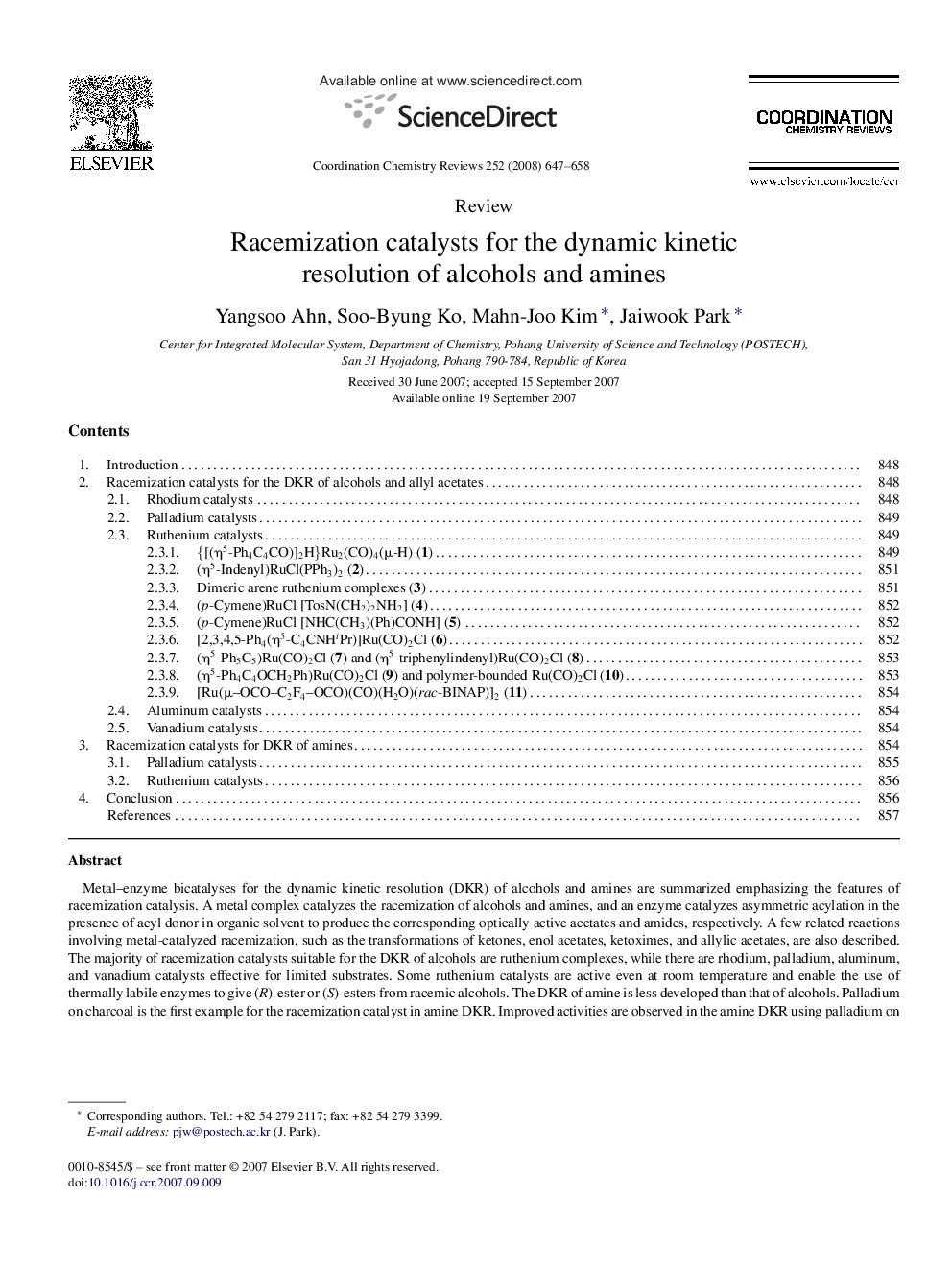| Article ID | Journal | Published Year | Pages | File Type |
|---|---|---|---|---|
| 1299949 | Coordination Chemistry Reviews | 2008 | 12 Pages |
Abstract
Metal-enzyme bicatalyses for the dynamic kinetic resolution (DKR) of alcohols and amines are summarized emphasizing the features of racemization catalysis. A metal complex catalyzes the racemization of alcohols and amines, and an enzyme catalyzes asymmetric acylation in the presence of acyl donor in organic solvent to produce the corresponding optically active acetates and amides, respectively. A few related reactions involving metal-catalyzed racemization, such as the transformations of ketones, enol acetates, ketoximes, and allylic acetates, are also described. The majority of racemization catalysts suitable for the DKR of alcohols are ruthenium complexes, while there are rhodium, palladium, aluminum, and vanadium catalysts effective for limited substrates. Some ruthenium catalysts are active even at room temperature and enable the use of thermally labile enzymes to give (R)-ester or (S)-esters from racemic alcohols. The DKR of amine is less developed than that of alcohols. Palladium on charcoal is the first example for the racemization catalyst in amine DKR. Improved activities are observed in the amine DKR using palladium on basic salts such as CaCO3 and BaCO3. Palladium nanoparticles dispersed in aluminum oxyhydroxide are effective for the DKR of aliphatic amines as well as for that of benzylic ones. The Shvo's complex is the sole example of homogeneous catalyst in the DKR of amines.
Related Topics
Physical Sciences and Engineering
Chemistry
Inorganic Chemistry
Authors
Yangsoo Ahn, Soo-Byung Ko, Mahn-Joo Kim, Jaiwook Park,
